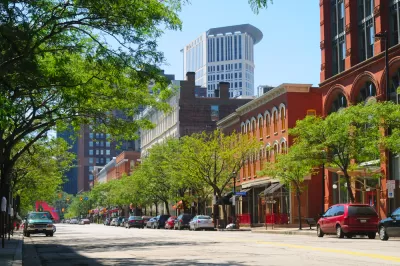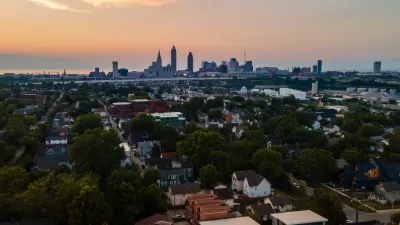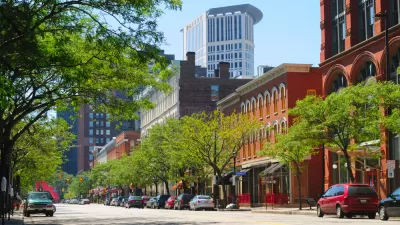A ULI-led symposium in Cleveland is looking at how an update of the city's outdated zoning code could revive some neighborhoods in the city.

During an all-day conference last week, Cleveland planners, developers, lawyers, community development officials, and architects came together to discuss, what was described as "an extensive dialogue on reshaping the code to encourage development and to make the city more attractive and livable." Reporting in The Plain Dealer, Steven Litt writes that the current code impedes walkability and separates land-uses, making it more difficult to create the pedestrian friendly environments urban dwellers are currently seeking.
One of the topics attendees are looking at is form-based zoning, which has been successfully implemented in several areas of the city. However, Cleveland's mayor is asking that the benefits of any zoning code changes be felt citywide.
As for Mayor Frank Jackson, he said he viewed form-based zoning as "a great tool, but as I tell my people, the measure of a tool is how it is used."
He said he would judge the new zoning on whether it enables economically challenged neighborhoods to participate in the growth that has occurred in a half-dozen popular areas, such as Ohio City, Tremont, University Circle and Detroit-Shoreway.
Developer Ron Ratner of Forest City advised in his key note address to the symposium that the city be careful in its approach to adopting form-based zoning in the city—understanding that it won't work in all areas. "You can't force the market to create density and walkability, but you can reinforce it where it does work," he said.
FULL STORY: Could a new zoning code make Cleveland a greener, healthier and more equitable city?

Planetizen Federal Action Tracker
A weekly monitor of how Trump’s orders and actions are impacting planners and planning in America.

Congressman Proposes Bill to Rename DC Metro “Trump Train”
The Make Autorail Great Again Act would withhold federal funding to the system until the Washington Metropolitan Area Transit Authority (WMATA), rebrands as the Washington Metropolitan Authority for Greater Access (WMAGA).

The Simple Legislative Tool Transforming Vacant Downtowns
In California, Michigan and Georgia, an easy win is bringing dollars — and delight — back to city centers.

The States Losing Rural Delivery Rooms at an Alarming Pace
In some states, as few as 9% of rural hospitals still deliver babies. As a result, rising pre-term births, no adequate pre-term care and "harrowing" close calls are a growing reality.

The Small South Asian Republic Going all in on EVs
Thanks to one simple policy change less than five years ago, 65% of new cars in this Himalayan country are now electric.

DC Backpedals on Bike Lane Protection, Swaps Barriers for Paint
Citing aesthetic concerns, the city is removing the concrete barriers and flexposts that once separated Arizona Avenue cyclists from motor vehicles.
Urban Design for Planners 1: Software Tools
This six-course series explores essential urban design concepts using open source software and equips planners with the tools they need to participate fully in the urban design process.
Planning for Universal Design
Learn the tools for implementing Universal Design in planning regulations.
Smith Gee Studio
City of Charlotte
City of Camden Redevelopment Agency
City of Astoria
Transportation Research & Education Center (TREC) at Portland State University
US High Speed Rail Association
City of Camden Redevelopment Agency
Municipality of Princeton (NJ)




























